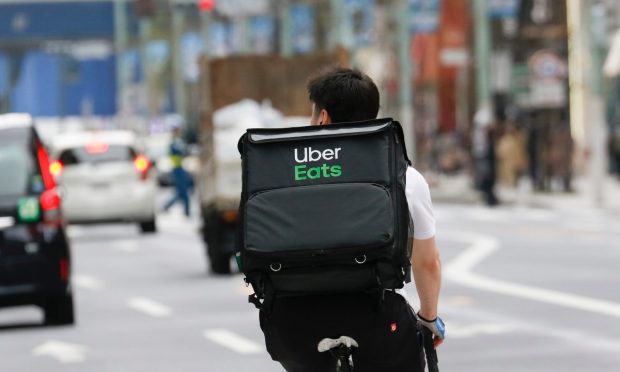Uber’s Horizontal Platform Shows Delivery Revenue Growth Outpacing Ride-Hailing Snapback

Wall Street may wind up hailing adjusted profit numbers, but for Uber, the latest earnings report underscores the firm’s continued embrace and development — and cross-selling — of the horizontal platform.
Beyond the $8 million in EBITDA posted in the quarter (a rough measure of cash flow), Uber’s earnings showed a continued jump in its ride-hailing business. But dig deeper and for this past quarter, at least, the delivery business momentum as measured by top-line torque, outpaced the mobility component.
From a high level, Uber’s total gross bookings jumped by 57% year over year, standing at $23.1 billion. That helped drive consolidated revenues up 72% year on year to $4.8 billion. Within that line item, delivery revenues surged by 92% to $2.2 billion, edging the 62% growth seen in the mobility segment at $2.2 billion. Freight gained 39% year on year to $402 million.
Supplemental materials released by the company show that the momentum continued into October and eclipsed pre-pandemic levels, as the company noted that gross bookings in the month were at an all-time high, up 45% compared to 2019.
With a nod toward ride-hailing across one important use case — travel to airports — the company said U.S. trips have increased “significantly” in recent weeks, up 20% over the beginning of September. Within that activity, business trips were up 60%.
Overall active U.S. drivers are up 65% since January, a rate outpaced by the 80% growth seen in active couriers.
CEO Dara Khosrowshahi said on the earnings call that the company is “innovating into the demand” for resumed travel — where consumers can book cars as many as 30 days in advance.
“Our delivery business is even less penetrated than mobility,” said the CEO.
The company is heartened for the appetite of on-demand delivery “for, well, everything,” he said, pointing to the recent acquisition of Drizly, which closed after the quarter ended.
Freight is a “massive opportunity” to disrupt the freight brokering industry and last-mile activities, he said, as the carrier base has grown by 50% over the past year.
In reference to cross-pollination, 50% of U.S. and U.K. gross bookings come from cross-platform users. In the U.S., a quarter of Eats first time users come from the ride-hailing installed base, management said on the call. Twenty of U.S. mobility first-timers came from the Eats side. Demand for delivery is strong even as economies are reopening.
The company said that total trips on the platform totaled 1.64 billion. Those trips grew 9% quarter on quarter and 39% year over year, with sequential growth. Monthly active platform consumers (or MAPCs) reached 109 million. MAPCs grew 8% quarter on quarter and 40% year on year.
